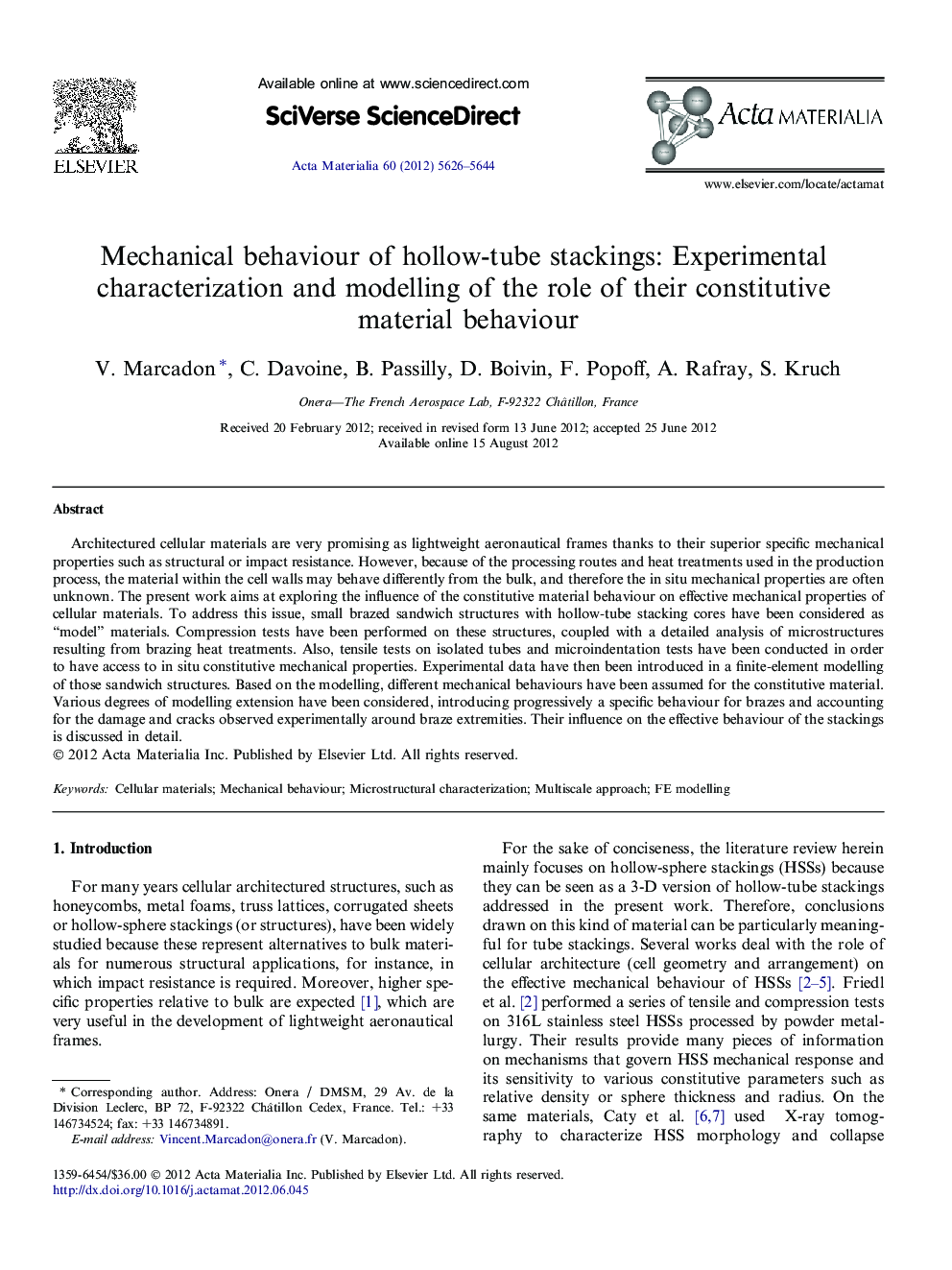| Article ID | Journal | Published Year | Pages | File Type |
|---|---|---|---|---|
| 10620406 | Acta Materialia | 2012 | 19 Pages |
Abstract
Architectured cellular materials are very promising as lightweight aeronautical frames thanks to their superior specific mechanical properties such as structural or impact resistance. However, because of the processing routes and heat treatments used in the production process, the material within the cell walls may behave differently from the bulk, and therefore the in situ mechanical properties are often unknown. The present work aims at exploring the influence of the constitutive material behaviour on effective mechanical properties of cellular materials. To address this issue, small brazed sandwich structures with hollow-tube stacking cores have been considered as “model” materials. Compression tests have been performed on these structures, coupled with a detailed analysis of microstructures resulting from brazing heat treatments. Also, tensile tests on isolated tubes and microindentation tests have been conducted in order to have access to in situ constitutive mechanical properties. Experimental data have then been introduced in a finite-element modelling of those sandwich structures. Based on the modelling, different mechanical behaviours have been assumed for the constitutive material. Various degrees of modelling extension have been considered, introducing progressively a specific behaviour for brazes and accounting for the damage and cracks observed experimentally around braze extremities. Their influence on the effective behaviour of the stackings is discussed in detail.
Keywords
Related Topics
Physical Sciences and Engineering
Materials Science
Ceramics and Composites
Authors
V. Marcadon, C. Davoine, B. Passilly, D. Boivin, F. Popoff, A. Rafray, S. Kruch,
